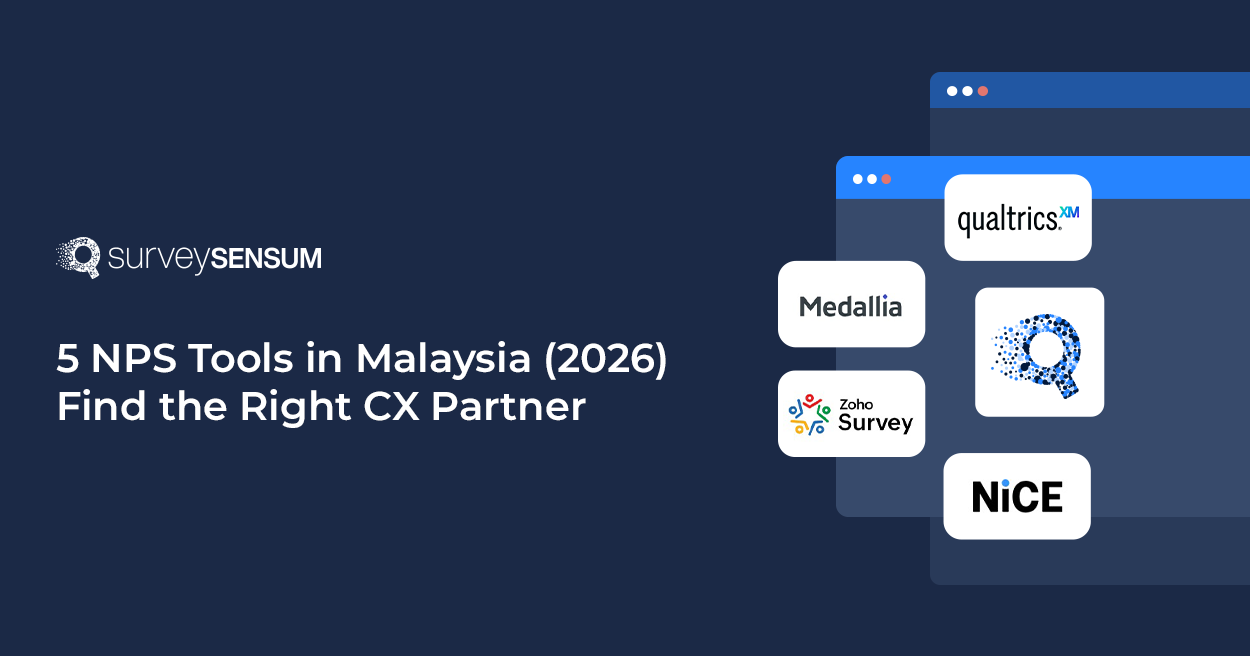

For a business to succeed in today’s digital landscape, reaching global audiences is a must. Content localization is a surefire way to do that. Creating content that resonates with different cultures and reaches target audiences no matter the language they speak is the aim of any effective localization strategy. For businesses, it helps to build trust, create engagement, make their brand recognizable, and generate more revenue.
But how to do that? Join us as we dig into the nuances of creating content that speaks to target audiences worldwide.
Let’s take a look at six ways of effective content localization strategy, shall we?
Content Localization: 6 Tips For Reaching Global Audiences
1. Know Your Audience

A study conducted by the Common Sense Advisory proves that 75% of people want to buy products in their native language. Therefore, you should start by conducting market research. Analyze who your audience is and find out more about their pains, cultural nuances, and preferences. Pay attention to cultural values and online behaviors. Utilizing the Google Trends API can provide valuable insights into trending topics, search queries, and online behaviors specific to your target audience’s region.
The importance of cultural research should not be underestimated. It will help you gain helpful insights into the preferences of your target audience. Therefore, you will know how to communicate with your customers better and make informed decisions regarding adapting your content localization strategy.
Start with observing your target audience’s cultural norms, behaviors, and attitudes. Your research can also include various surveys, studies, and focus groups. Analyzing your target audience deeper will help you create relevant and engaging content.
One of the best examples of a successful localization strategy is McDonald’s adding spicy food options to their menu in India, having analyzed the cultural nuances and food preferences of their target audience in this country.
Content localization aims to ensure your content resonates with the target audience. A localized approach allows your business to thrive in a new market. Customers are more likely to engage with a company when they see content that speaks to them.
You don’t need to localize your content to every single language that exists in the world if it’s not your business goal. Focus on the markets you want to reach and localize content, considering local idioms and phrases specific to the region in question.
Another perfect example would be EssayShark, which focuses mainly on an English-speaking audience, primarily students. They offer a helpful service and have a team of essay writers who follow the instructions provided by the customer closely. In such a way, they’ve managed to identify the main pains a college student encounters and are able to offer working solutions.
2. Leverage Customer Feedback
Customer feedback is vital for understanding how your target audience perceives localized content. It provides valuable insights into areas that need improvement and reveals which strategies are effective and which ones should be discarded. By maintaining continuous interaction with your audience, you can ensure that your content stays aligned with evolving cultural and market trends.
To gather and analyze customer feedback effectively, utilize a variety of tools and channels. These include forms and surveys, interactions on social media (especially in the comments section), analytical platforms like Google Analytics, customer support channels, and community forums. Googling your business to uncover unfiltered feedback is also beneficial in the long run. For advanced insights and strategies on enhancing your online presence, consider partnering with a reputable agency like Click Intelligence that specializes in white label ai link building services.
Additionally, consider investing in a dedicated customer feedback platform. These platforms offer comprehensive features for collecting, organizing, and analyzing feedback from various sources, providing actionable insights to improve your products, services, and overall customer experience.
And don’t forget to promptly address any customer problems that arise and close the feedback loop. This demonstrates that you value customer feedback. Regularly review customer reviews, monitor your business’s ratings, and engage with your customers to understand their opinions. Neglecting this aspect could result in overlooking crucial insights and potentially losing local customers. Ultimately, feedback can either propel your business to success or lead to its downfall.
Furthermore, an adaptable email signature template can enhance your communication by including localized details such as international phone numbers and language preferences. This ensures clarity and professionalism across global communications and helps maintain consistent branding while effectively engaging with diverse audiences worldwide.
Global streaming services like Netflix listen to customer feedback and try to adapt local content based on these requests. It allows them to stay relevant, gain new customers, and generate more revenue
So make customer feedback an ongoing process with SurveySensum
3. Go Beyond Translation
The process of Localization is not merely about translating. The content should be adapted to the target audience, considering cultural differences, local context, and idioms. It’s vital to adjust humor and references so the target audience gets the gist. For instance, the visuals you use should be culturally appropriate. No matter how much you use advanced tools like TMS (Translation Management System), the human touch is essential to ensure that the message is perfectly tailored to local needs.
The main idea behind content translation is to ensure that translated content resonates with the target audience. It’s like customizing your outfit depending on the party you attend. In this case, it’s a cultural party, and you need to make sure that you look appropriate. This is where you can wear a men’s tuxedo or suit to look both professional and stylish.
Keep in mind that every culture has its design principles and aesthetics. The graphics and designs you will use should harmonize with the cultural preferences of the country you wish to localize your content.
Take a look at the following example of how colors convey different meanings depending on the cultural context: In the West, red is often associated with danger, or anger while in China, this color symbolizes prosperity and good luck.
- The visuals you use are essential because this is the first thing your potential customer will pay attention to. They can help evoke emotions, motivate your target audience to buy, or make your content feel alien. Visuals need to align with localized text because our brain processes images faster.
- When localizing content, focus on the regional trends to better understand the context. Aim for authenticity to avoid cliches. Conduct thorough research to understand not only cultural but social and historical contexts as well. Don’t forget that content can and should be adapted based on how fast the cultural landscape evolves.
Knowing these tricky differences will help your business work out a more effective content localization strategy and speak to the hearts of your customers. Simply translating every single piece of the information you have word for word won’t get you anywhere. Context is what matters the most.
4. Embrace Local Expertise

Successful content localization is critical to reaching the target audience and turning leads into revenue. If you want your product or service to be a hit, it needs to speak to the target audience in their local language.
As you can see, most customers prefer seeing content in their local language. They will consider buying a product even if website localization is poor. The survey results by CSA Research show that 73% of customers would like to see product reviews in their native languages.
That’s why it would help to consider having an in-country review team based in the regions where you wish to expand your business. It will help you ensure that your content is localized according to cultural appropriateness. Thus, you will avoid the number one mistake the absolute majority of businesses make: embarrassment of the wrong translation and potential reputation costs later on.
Localizing content is a daunting task, especially when you have a lot of regions and languages to cover. Using localization platforms along with local experts is a perfect solution to this problem. Moreover, collaborating with native speakers and locals will help you present a more accurate content localization. For businesses that offer educational services, having native speakers on the team helps to craft a swot analysis paper better and faster. It allows such companies to meet customer demands and grow their business.
Try using a professional localization team. Such teams will add cultural sensitivity and linguistic expertise to your research. Such a team will have a cultural advisor whose expertise is crucial for avoiding missteps. To effectively reach your audience, it’s essential to use local SEO strategies tailored to your region. Businesses in Lyon, for example, benefit from working with top digital marketing experts in France, who understand the nuances of the local market, customer behavior, and regional search trends. Another important aspect is to get constant feedback from the local audience (i.e., customers) on how well your content resonates with them. Creating a local focus group to tackle this issue is a brilliant idea.
Test it with the locals to better understand how your content will be perceived. Such usability tests can help improve user experience and highlight aspects unrelated to the local context.
Consider the case of KFC who translated their slogan “Finger-lickin’ good” into “Eat your fingers off” when entering the Chinese market. Having a local team of experts would have helped this fast-food chain avoid such silly mistakes. No matter how great your customer journey research is, failing to understand the basics, such as local context, can cost a business the ability to be represented in a particular market. Luckily for KFC, they’ve managed to earn their place in the Chinese fast food market. However, not every business has the ability and resources to make such mistakes.
5. Optimize For Local Search

Reviewing these stats shows that an average user spends almost seven hours scrolling the internet. Ensuring your content is localized to reach the target audience is crucial.
To better understand user behavior and local search trends, consider using multilingual SEO. This strategy will help you optimize content to rank well in search engine result pages depending on each region or country you are targeting. Integrating affiliate SEO marketing into this approach can further expand visibility and revenue potential, enabling brands to reach diverse audiences while maintaining localized authenticity.
Content localization is an ongoing process. However, testing and optimizing are the two crucial processes you need to do before you enter the desired market. Search engine optimization is the most functional way to determine which keywords are ranked higher and what topics are the most relevant in a search engine. The strategies you use should be market-specific. When implementing these strategies at scale, dev friendly localization packages can help your technical team integrate multilingual SEO capabilities directly into your content management system, automating keyword optimization across different regional versions of your site.
Remember that direct translation of keywords may not work in your favor. You risk not capturing local search markets. Research which keywords resonate with the target audience and include them organically in your localized content.
Here are a few SEO techniques you can use:
- Local backlinks: Boost your website’s authority by building links from reputable and local domains. Engaging in link building outreach can significantly expand your backlink profile as well. Additionally, analyzing your competitors can reveal valuable link opportunities and strategies they’re using. Leveraging white label SEO services can streamline your backlink acquisition process, allowing you to scale efforts efficiently while maintaining quality. Implementing link monitoring as part of your strategy ensures that your backlinks remain active and continue to contribute positively to your site’s SEO performance. This proactive approach helps identify and rectify any broken links, maintaining the integrity of your backlink profile and bolstering your website’s standing in local search rankings.
- Mobile Optimization: The absolute majority of your target audience will use a phone or a tablet to search for the products and services they require. Your content has to be mobile-friendly; otherwise, you will lose customers.
- Hreflang tags: These tags are significant because they tell search engines which target and language you are targeting. Thus, you manage to provide the target audience with the right content.
For example, Baidu has more than 70% of the market share in China, which makes it the most popular search engine in this market. Relying on Google keyword research in this part of the world would be a mistake.
6. Track And Measure Success
Measuring the performance of localized content helps you understand how well your business is doing when reaching target audiences. The best metrics to determine how well your content is performing include tracking conversions, monitoring website traffic, and paying extra attention to customer feedback.
Suppose you notice no engagement from the target audience or your content does not generate traffic. In that case, it’s time to reevaluate your strategy and use different tools to achieve your goals and improve conversions.
Measuring the success of your strategy is vital to understanding how well the localized content performs. These data will help you determine the impact of your localization efforts and identify areas that require improving.
These are various metrics you can use to measure the success of localized content:
- Conversion metrics: sign-ups, downloads, sales. This metric helps you understand how well content behaves when leading the target audience to a desired action (signing up, buying, etc.)
- ROI metrics: This metric helps you understand the financial aspect of success regarding localized content.
- Engagement metrics: click-through rates, page views, and time spent on the website. This aspect is vital for understanding how well your content resonates with the target audience. For example, if you are writing about tiny house Texas, you would want to track how many people click on the link, how long they stay on the website, and how many pages they visit.
- Feedback metrics: customer reviews, ratings. This metric helps you determine what your target audience likes and dislikes about a product/service.
Conclusion
To sum up, an effective content localization strategy is essential for businesses wishing to enter new markets. To reach global audiences and become memorable in new markets, companies need to understand their target audience, analyze local context, go beyond mere translation, incorporate local experts to avoid making silly mistakes, consider local trends in SEO, monitor success, and implement changes when necessary, and leverage customer feedback to get a complete picture of how well their business is doing.
When localizing content, you are not just translating a pile of words into another language; you are creating a connection between your business and a new market where you wish to make an impact. Content localization is about understanding the context and uniqueness of each culture to speak to your target audience in their local language.
Following the tips mentioned above will help your business grow, reach target audiences, and create content that resonates with your users worldwide. Try applying these techniques today, and you’ll see that driving engagement and conversion rates, as well as gaining more revenue is a doable task. Use the tools provided to reach your business goals and prosper in the field you are passionate about.















